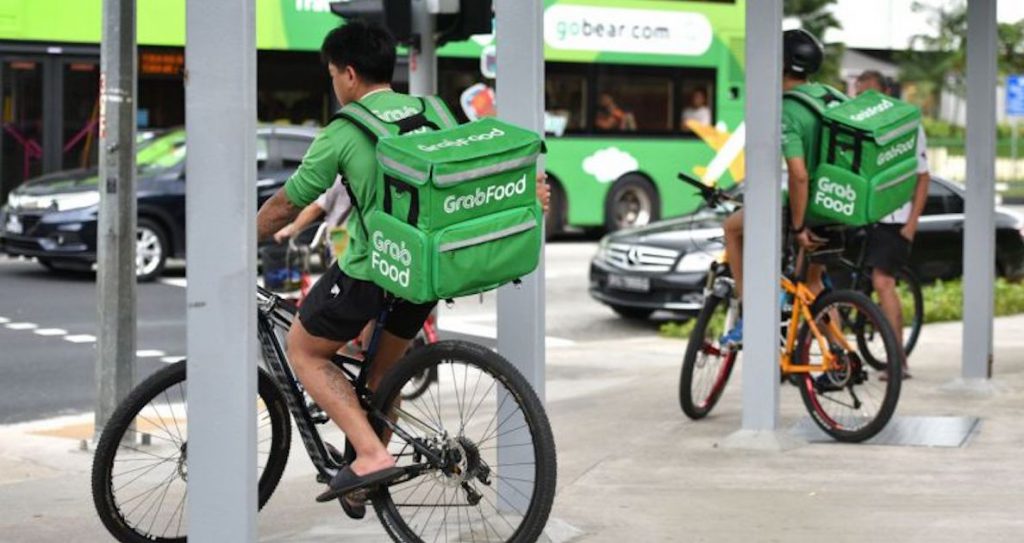Just a few years ago, having groceries and food delivered to your doorstep with a few taps on your smartphone was not commonplace at all. However, times have changed, especially with the advent of the Covid-19 pandemic.
With most Singaporeans having to work from home and limit the time spent outside, many have taken to e-commerce sites and delivery platforms to have goods delivered to them.
Fast, on-demand deliveries are something customers have grown used to and e-commerce platforms have begun ramping up their efforts in providing efficient services to customers.
This has led to the rise of quick commerce, also known as q-commerce.
From e-commerce to quick commerce

E-commerce platforms in Singapore witnessed a two-digit growth at 23 per cent in total web visits throughout the first six months of 2020 according to iPrice. Singaporeans spent an average of S$113 in a single transaction online from January to June 2020.
The e-commerce boom quickly gave rise to an era of quick commerce, and as its name suggests, it’s all about being fast. Q-commerce brings small quantities of goods to customers in a few hours or less, whenever and wherever they need them.
Traditionally, e-commerce has been focused on getting customers to purchase in greater quantities by giving out incentives such as waived delivery fees. However, q-commerce differs in that one of its hallmark features is that customers order more frequently, but in smaller quantities.

Another feature of quick commerce is that it’s decentralised. As customers stay home due to the pandemic, places like the Central Business District see decreased activity.
On the other hand, suburban neighbourhoods see higher footfall traffic. This has led purchasing habits to become more “localised” to neighbourhood stores and malls, propelling the demand for quick commerce and as more small businesses turn to on-demand delivery.
An example is delivery giant Foodpanda’s cloud grocery stores, Pandamart. These stores are purpose-built to serve only deliveries and with no walk-in retail storefront.

There are over 150 of these stores in 40 cities across eight markets in Asia – Singapore, Malaysia, Thailand, Taiwan, Hong Kong, Bangladesh, Pakistan and the Philippines.
In Singapore, Pandamart offers more than 5,000 products, and according to the company, it is able to ship these items within 25 minutes of them being ordered.
In May this year, Grab also announced the launch of GrabSupermarket as an expansion of GrabMart, Grab’s on-demand everyday goods delivery service.
According to Grab, GrabSupermarket houses over 10,000 unique products so consumers can choose from a broader range of products and pay one delivery fee for it.
In October last year, Deliveroo also launched its first ever on-demand grocery delivery service amid the ongoing COVID-19 pandemic. It onboarded specialty stores like Kuriya Japanese Market and Ryan’s Grocery, in addition to its tie-up with British retailer Marks & Spencer.
| Company | Grocery Mart Service | Delivery Time | Number Of Products Carried |
| Amazon | Amazon Fresh | Within 2 hours | – |
| Grab | GrabSupermarket | Next day delivery | 10,000 |
| Foodpanda | PandaMart | Within 25 minutes | More than 5,000 |
| Deliveroo | Deliveroo | Within 2 hours | Works with various merchants, including Marks and Spencer, Cold Storage |
Besides cloud supermarkets, cloud kitchens have also gotten popular with the rise of quick commerce. They are shared kitchens which mainly cater for food delivery and do not have a physical shopfront.
For example, Singapore-based Tiffinlabs is an end-to-end food tech company built for food delivery. The brand manages a chain of virtual restaurants which exist as commercial kitchens.
Singapore’s food delivery giants GrabFood, Deliveroo and Foodpanda also have their own cloud kitchens.
To meet the demand for quick commerce, e-commerce giant Shopee made its foray into the food delivery arena with the launch of its new vertical, ShopeeFood.
Shopee is the first e-commerce platform to have its own food delivery service in Indonesia, taking on local players GrabFood and Gojek’s GoFood. It is also Vietnam’s leading food delivery player.
Even though ShopeeFood is not present in Singapore, there is a hint that signals its potential expansion into Singapore — it’s currently hiring for a product management role based here.
According to its job description, Shopee said that the new hire will have the opportunity to “drive conceptual and technical development of ShopeeFood product ideas, improve data accuracy, and better position ShopeeFood as the preferred food delivery platform in the region.”
One of its key roles is to lead and design the roadmap for ShopeeFood products, effectively review input and stakeholders’ evolving needs to enhance current product features, as well as propose new products, and ensure alignment with all stakeholders.
It seems there’s only one ShopeeFood role in Singapore so far, though it is likely the company will gradually ramp up hiring in time to come.
Consumers’ expectations have evolved

Singaporeans have always been living a fast-paced lifestyle, with speed and convenience being of utmost importance for most consumers. This lifestyle has inevitably affected consumer behaviour as well.
According to Amirul Shah, Commercial Director of foodpanda Singapore, “customers expect to find exactly what they’re looking for and receive it the way they want.”
This has led to delivery platforms expanding into two-wheeled delivery fleets on top of trucks and vans, allowing riders to get to customers in a closer proximity.

To quicken deliveries, Grab announced a pilot robot runner service at Paya Lebar Quarter (PLQ) Mall this June.
The robot runner will be able to consolidate orders across several restaurants within the mall before handing them to delivery partners at a central collection point for last-mile delivery.
Grab said that its delivery partners may shave off between five to 15 minutes of the usual time taken to navigate shopping malls and collect multiple orders.

Foodpanda also partnered with ST Engineering to pilot food delivery via drones. The drone, called pandaFly, conducted a test flight last year, where five packets of ayam penyet was delivered to a vessel located three kilometres off Marina South Pier.
According to foodpanda, customers increasingly want to be able to buy “anything, from anywhere, and receive them immediately.”
The food delivery giant plans to meet the demands of these customers with pandaFly by making long-distance deliveries “better, faster and cheaper”.
In the last five years, foodpanda has managed to cut delivery times from 60 minutes to under 30 minutes. With the new pandaFly, customers are expected to receive their orders in less than 15 minutes.
A new era of e-commerce
Singapore is one of the top five Southeast Asian markets leading the charge when it comes to e-commerce market growth.
As e-commerce and food and grocery delivery platforms seek to expand their growth within Singapore and Southeast Asia, they are likely to venture deeper into quick commerce.
Now that Singaporeans are already accustomed to the convenience and efficiency that e-commerce and quick commerce bring, going back to the time where deliveries were slower is highly unlikely.
Existing e-commerce players are thus slated to increase their quick commerce offerings, marking the start of a new era of e-commerce.
Featured Image Credit: Nestia












